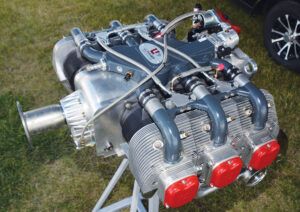
Knowing that I’m mainly stealing from the upcoming Engine Buyer’s Guide, it still seems a good idea to fly by some of the big ideas we uncovered while treading the hallowed pebble walkways at AirVenture last July.
For some years now my focus at the big Wisconsin blowout is getting with the engine makers to see what’s new, and 2022 was no exception. That’s because I’ve been detailed to write the Engine Buyer’s Guide for this august publication, and in that capacity AirVenture acts as a forward listening post. Being in full-boil bratwurst season, AirVenture is a little early for a February magazine issue, but it’s also pretty much one-stop shopping as all the cool kids are present and things don’t progress all that rapidly in the engine world anyway.
That said, I must note that when it comes to interesting greasy parts, there’s nothing new this year. A harsh assessment? You bet, but on the other hand, the post-pandemic world is so fouled up it’s near miraculous anyone is getting anything out the door in the first place.
So let’s hit some highlights. If you’re zinging around in the Rotax world you’re doing fine. The guys with the green, red and blue valve covers are part of a larger, diversified company that builds much more than hobby airplane engines, so they have the size and coin to handle the occasional market and business turbulence. It also seems a well-managed company that’s seen to its supply chain, the bottom line being Rotax aircraft engines and parts appear to be available, if getting pricier.
In the boutique engine-making world the little companies have adapted more quickly than the big legacy engine makers, which is an advantage to being smaller and nimbler. Thus, AeroMomentum, Jabiru, ULPower and many others are reporting variable and occasionally long lead times because they’re swimming in the same supply stream as everyone else. So they’re getting product out, but it’s still smart to order as early as possible.
The real fun begins with the two biggies, Lycoming and Continental. To hear the grapevine tell it, there have been disruptions in Lycoming’s cylinder manufacturing unrelated to COVID, and then there was COVID. The bottom line is Lycoming’s ability to produce the hugely popular 360/540 cylinder is rather limited at the moment. Limited as in Lycoming is able to just meet its own in-house engine building requirements, but barely able to address the rebuild market. Furthermore, couple the eager demand for Lycoming engines to the supply chain disruptions and other COVID fallout, and you have a dismal case of high demand and a low production rate. To put some numbers to it, Thunderbolt, the popular Lycoming niche line that turns out specialized Experimental Lycoming engines for our kit planes, had the ability to build just 12 engines a month last summer according to official sources. That rate was not expected to increase substantially for months, and, get this, Thunderbolt has over 300 engines on order from customers. Just call it a year’s wait.
Now, things will improve as the supply chain is slowly de-kinked, those people who didn’t return to work post- COVID are replaced by newly trained hires and demand (probably) slackens as the pipeline is slowly filled. But it’s not going to be soon.
But wait, said Continental. They have 360/540 cylinders for their Titan Experimental engines, but not with the popular Nickel Silicon Carbide (NiC3) bore treatment. If you can use regular old steel cylinder barrels, the Titan line can supply those. Now, can Continental supply its own line of complete Titan engines (Lycoming clones)? Well, yes, but the supply chain disruptions, along with their protracted move to a new engine machining facility, mean the current supply of complete engines is slower than demand, and we believe it could stay that way for several months more once you read this. The good news from Continental/Titan is things are improving. The new manufacturing facility is definitely supplying higher quality parts in increasing volumes, and the parts supply is improving. Just hang in there.
It was a similar story down at the Superior tent. The longtime aftermarket parts supplier is another source for those popular Lycoming-type cylinders. In fact, their only complaint was simply trying to meet demand, which was predictable as they’re taking up as much of the Lycoming slack as they can.
Help Wanted
One “supply” shortage having a real effect but only talked about in quiet tones is “finding people as dedicated as we are,” as one aftermarket rebuild engine shop put it. That is, finding, hiring and training good people to machine and assemble engines has been troublesome for some years now and the phenomenon seems intensifying. No doubt wages need to rise, which translates into more expensive engines, but I’ll guess working conditions and all the employee trimmings are something we’re going to get used to paying for too. It’s tough to get youngsters to sign up for long hours of what’s really fairly solitary, somewhat repetitive effort in a windowless tin shed these days. Not to say the engine shops we’ve seen are sweatshops, but working expectations are rather different with today’s youth than when us gray (white?) beards were looking to spend time around airplanes.
Looking Forward
Verbally ground looping into the “tall, green and uncut” as Loren Lemon used to say, I had some conversations at AirVenture that were, if not mainstream, at least interesting to me. One of those was catching up with Jurgen Schwarz, CEO at RED Aircraft based in Germany. RED builds a very 21st century, Jet-A burning V-12 engine the big-motor gearhead in me is lusting over. Not for the typical individual airplane builder in either price (start counting by the $100,000s) or power (500 hp), the RED AO3 V-12 is still the pinnacle of modern aircraft piston engine design and thus points the way to what could be if we were all multimillionaires. Most recently seen in Air Tractors and the avant-garde Celera 500L (that white bullet-shaped pusher making the news about a year ago), the V-12 remains quietly in the background as RED’s customers are fairly secretive industrial or governmental buyers, so we were eager to hear what Schwarz could tell us. And what he said is they were working on something like the 65th production engine, a number much higher than I would have guessed and indicative of RED’s apparent viability. Furthermore, the previously talked about 300-hp V-6 offshoot has been abandoned as not powerful enough. Now the possible smaller derivative is a 400-hp V-8.
Also in the future file are small turboprop engines aimed at our Experimental market. Last year TurbAero made its debut, and the company was at AirVenture again this year to announce they have an RV-7 test bed in the works and that finalizing their engine design continues. We’ll listen for a whining noise sometime next year as the prototype gets lit the first time.
This year the all-new turbine was from Heron, a new Greek company with long family roots in small turbine design. We covered the details of the tiny, 82-pound, 130-hp GVA-130 prototype in our online AirVenture coverage (www.kitplanes.com/heron-turbine), so I won’t beat you with specifications again here, but for sure the interest in and the controversy surrounding the viability of small turboprops for sport planes is as strong as ever, and I’m definitely keeping an eye on how these exciting new projects develop. With the Heron said to be in production by late 2022, we should not have long to wait.


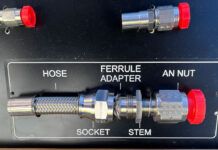

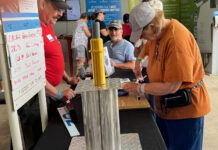





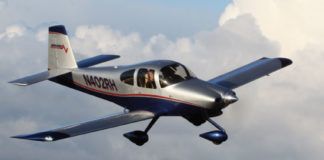
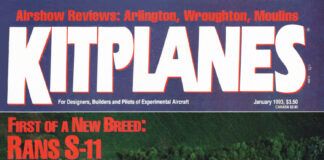


An other european130-hp turbine that flies: https://www.turbotech-aero.com/solutions/
Viking Aircraft engines dominate the Zenith kit market. A quick review of their YT videos shows Viking Engines in more different kits than any other manufacturer. Viking’s contribution in the E-AB definitely deserved specific mention.